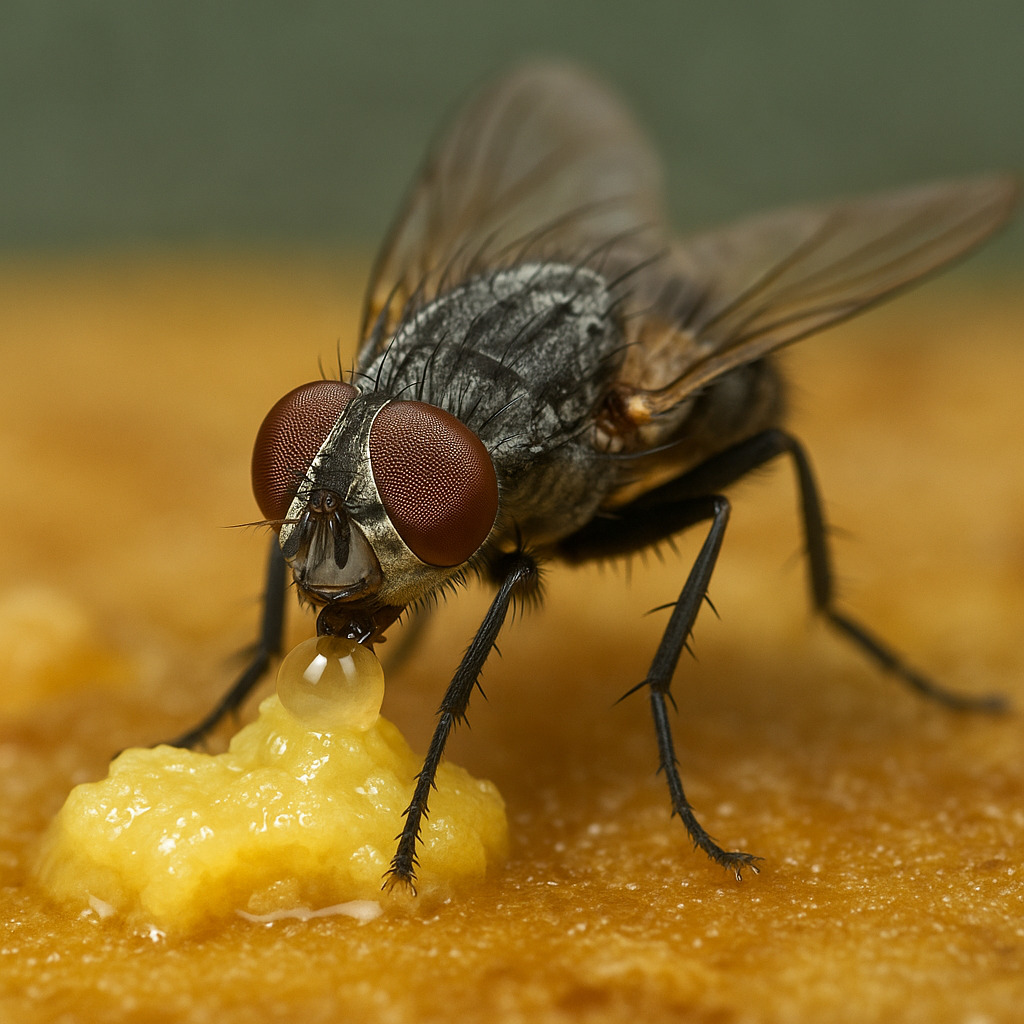The Fly’s Feast: When Disgust Becomes Science
🍽️ A Table Set… Backwards
Flies don’t have teeth or sharp jaws, yet they are perfect eaters. How? The answer is simple and revolting: they vomit on food. Exactly. When a fly finds a breadcrumb or a ripe fruit, it releases its digestive juices over it, turning everything into a liquid mush that it can then suck up through its straw-like mouth.
🤢 The Secret of “Enzymatic Vomit”
What we see as an innocent insect landing here and there is actually carrying a small chemical factory. The enzymes in its regurgitation dissolve sugars, fats, and proteins, making them digestible. That’s why a fly can feed on almost anything: from honey to feces, from rotten fruit to decomposing corpses.
🦠 Not Just Food: A Taxi for Germs
While feasting in this peculiar way, flies also transport thousands of bacteria and parasites on their legs and mouthparts. Each time they land on a plate or a glass, they leave behind an invisible microbial trace, making them one of the greatest “spreaders” in the natural world.
🌍 The Useful Side of Flies (Yes, It Exists)
Before condemning them entirely, it must be said that their disgusting way of feeding plays a fundamental role in ecosystems. Flies help eliminate decomposing organic matter, speeding up the nutrient cycle. Without them, our environments would literally be overwhelmed by organic waste.
🕷️ A Nightmare Banquet
Their feast is far from a fancy dinner: between regurgitation, enzymatic juices, and contaminated legs, the meal of flies is a triumph of repulsion. Yet, this very behavior makes them irreplaceable cogs in nature’s machine. A lesson reminding us that even in the most extreme disgust lies a precise ecological order.








Leave a Comment